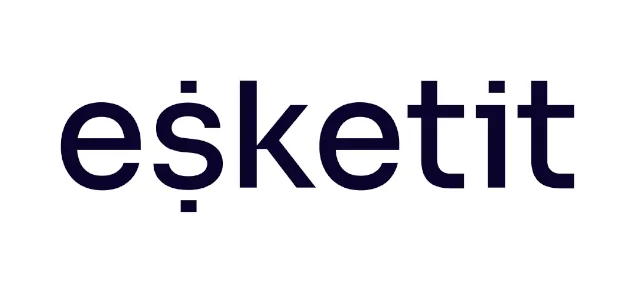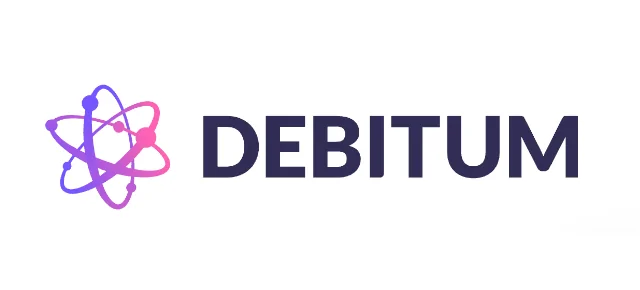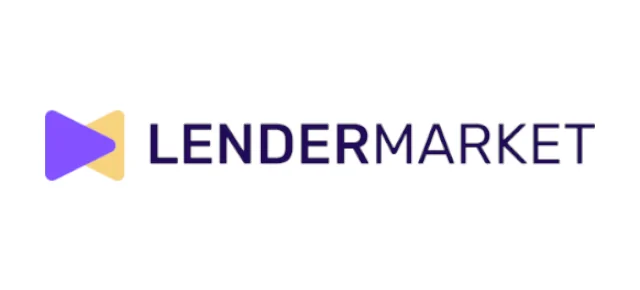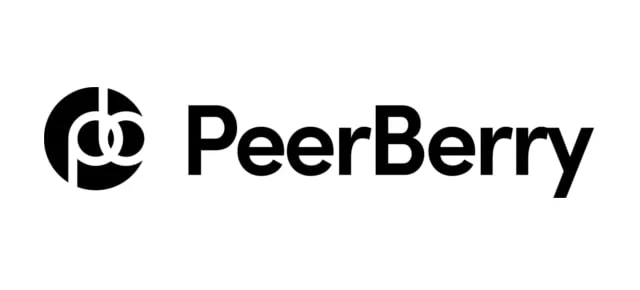5 Best Lending Crowdfunding Platforms in Europe – 2023
Are you looking to start investing in debt crowdfunding, but don’t know where to start? Don’t worry – we have put together a list of the best lending-based crowdfunding platforms in Europe to help you get started.
Investing in loan-based instruments can provide you with a steady stream of income, while also providing you with the opportunity to diversify your portfolio and reduce your overall risk. Discover the top lending crowdfunding platforms in Europe and find out how you can start investing today!

Avg. return:
~14.82%
Available:
Europe
Launched:
2022
Minimum:
€10
Auto-invest:
Yes
Sec. market:
No
Protection:
Buyback
Bonus:
+0.5%
Or see our:
Hive5 review

Avg. return:
~12.35%
Available:
Europe
Launched:
2020
Minimum:
€10
Auto-invest:
Yes
Sec. market:
Yes
Protection:
Buyback
Bonus:
+1%
Or see our:
Esketit review

Avg. return:
~14.83%
Available:
Worldwide
Launched:
2018
Minimum:
€10
Auto-invest:
Yes
Sec. market:
No
Protection:
Buyback
Bonus:
+ 1%
Or see our:
Debitum review

Avg. return:
~15.64%
Available:
Most places
Launched:
2019
Minimum:
€10
Auto-invest:
Yes
Sec. market:
No
Protection:
Buyback
Bonus:
+1%
Or see our:
Lendermarket review

Avg. return:
~11.18%
Available:
Europe
Launched:
2017
Minimum:
€10
Auto-invest:
Yes
Sec. market:
No
Protection:
Buyback
Bonus:
+0-1%
Or see our:
PeerBerry review
FAQ about debt crowdfunding platforms
What is debt crowdfunding and how does it work?
Debt crowdfunding is the process of raising capital for a project or business by collectively pooling funds from hundreds or thousands of investors. It is a type of crowdfunding in which investors receive debt instruments in exchange for their investment.
The debt-based crowdfunding platforms in Europe offer an attractive and safe way to access debt capital for both investors and borrowers. The platforms provide investors with the opportunity to invest in loans and other debt instruments with varying maturities and risk profiles. These platforms also provide borrowers with access to capital that may not be available through traditional banking channels.
The best debt crowdfunding platforms in Europe offer a range of features to both investors and borrowers. For example, some platforms offer an auto-invest feature to enable investors to diversify their investments across a range of loan types, maturities, and risk profiles. Other features may include a secondary market for investors to buy and sell debt instruments, or the ability to create a portfolio of crowdfunded loans.
Crowdfunding platforms for investors in Europe also offer a wide range of investment loans for investors to choose from. These loans vary in terms of maturity, interest rates, loan-to-value ratios, and other factors. The platforms also typically provide borrowers with competitive interest rates and flexible repayment terms.
Types of lending-based crowdfunding platforms
There are three main types of lending-based crowdfunding platforms:
- P2P (Peer-to-Peer) lending platforms
- P2B (Peer-to-Business) lending platforms
- P2P real estate lending platforms
Learn about each type of platform here:
1. P2P (Peer-to-Peer) lending platforms
P2P lending platforms are online services that allow individuals to lend money to other people via consumer loans without using a traditional financial intermediary such as a bank. These services match borrowers with lenders and facilitate the loan process.
This type of financing is often used for smaller loan amounts and can be a great way for borrowers to access funds quickly, without having to go through a lengthy and expensive traditional loan process. P2P lenders typically provide more competitive interest rates than those offered by traditional banks.
The platform will usually collect a fee for facilitating the crowdfunding for loans and may also offer other services such as credit scoring and loan management.
Learn more about one of the most popular P2P lending platforms in this review of PeerBerry.
2. P2B (Peer-to-Business) lending platforms
P2B lending platforms are online platforms that connect businesses with individual investors who are willing to lend money to them. These platforms offer businesses access to capital from a large pool of lenders, often at lower interest rates than traditional funding sources.
The platforms provide a transparent and secure experience for both lenders and borrowers, allowing businesses to secure funding quickly and efficiently.
This type of financing allows small businesses to access the capital they would not typically be able to access due to their size or lack of collateral. By utilizing crowdfunding, businesses can access capital from a much broader group of potential investors.
Learn more about one of the most popular P2B lending platforms in this review of Debitum.
3. P2P real estate lending platforms
P2P real estate lending platforms are online platforms that connect borrowers and lenders to facilitate real estate loans. Crowdfunding of real estate loans is the process of raising funds for real estate projects through the collective effort of a large pool of investors. These investors are typically sourced from the public, who invest relatively small amounts of money in exchange for a return on their investment.
Through crowdfunding, real estate developers and investors can access capital without relying on traditional sources such as banks or other financial institutions. These platforms allow borrowers to access funds from a variety of sources, including banks, institutional lenders, private investors, and other users of the platform itself. They offer a more efficient and cost-effective way for borrowers to access capital for real estate investments, as well as for lenders to diversify their portfolios and earn higher rates of return.
P2P real estate lending platforms have grown in popularity in recent years, as they have become an increasingly important part of the real estate lending landscape.
Learn more about one of the most popular P2P real estate lending platforms in this review of EstateGuru.
Debt-based crowdfunding platforms by loan type
Apart from the major debt-based crowdfunding platforms types like the ones mentioned above, each type of category can be focused on different loan types. Here are the most popular loan types for debt investors.
Crowdfunding business loans
Business loans are loans specifically designed for business purposes. Debt crowdfunding for business can be used for a variety of purposes, such as purchasing equipment, hiring staff, expanding operations, and more. This category includes startup loans, small business loans and loans for more mature businesses.
Reviews of platforms for crowdfunding business loans:
Crowdfunding real estate loans
Real estate loans are loans that are taken out for the purpose of purchasing real estate. These crowdfunded lending loans are typically secured by the property itself and are often used for the purchase of residential or commercial property, including land and buildings.
Reviews of platforms for crowdfunding real estate loans:
Crowdfunding personal loans
A personal loan is a type of loan that is typically unsecured and can be used for a variety of purposes, including debt consolidation, medical expenses, home improvement projects, and more. Personal loans may come with a fixed or variable interest rate and can range from a few hundred to several thousand euros.
Reviews of platforms for crowdfunding personal loans:
- Lendermarket review
- PeerBerry review
- Esketit review
- Swaper review
- Bondster review
- Kviku review
- Robocash review
- VIAINVEST review
Crowdfunding bridge loans
Bridge loans are short-term loans that are used to provide financing for an individual or business until permanent financing is obtained. These loans are typically used to purchase or refinance a property, fund a business venture, or cover unexpected expenses. Bridge loans are usually secured by collateral and have higher interest rates than traditional loans.
Reviews of platforms for crowdfunding bridge loans:
Crowdfunding auto loans
Auto loans are loans taken out by individuals to purchase vehicles. They are typically secured loans, meaning the vehicle purchased serves as collateral for the loan. Auto loans typically have a fixed interest rate and a set repayment term, usually ranging from 36 to 84 months.
Reviews of platforms for crowdfunding auto loans:
Benefits of loan-based crowdfunding
Loan-based crowdfunding, or peer-to-peer (P2P) lending, is quickly becoming a popular and viable financing option for startups and small businesses in Europe. This type of non-equity crowdfunding allows investors to lend money to borrowers in exchange for a return on their investment. It can be a great way for investors to diversify their portfolios and earn a higher return on their investment than traditional investments.
P2P lending offers investors a number of benefits, including lower investment costs, higher return on investment, and more control over their investments. Investment costs are typically much lower than with traditional investments, as there are no brokers or advisors involved. Also, P2P lending typically offers investors a much higher return on investment than traditional investments. This is because the interest rates on P2P loans are often much higher than those offered by banks or other financial institutions. Finally, investors have full control over their investments, as they can choose which borrowers to fund, how much to invest, and how long to invest.

Risks of lending crowdfunding platforms in Europe
- Interest rate risk: Interest rate risk is the risk that the interest rate on the debt securities offered through the loan crowdfunding sites will rise or fall, thus increasing or decreasing the individual platform’s return on investment.
- Default risk: Default risk is the risk that the borrower will not be able to repay the principal or interest on the debt securities. This could lead to losses for investors.
- Regulatory risk: Regulatory risk is the risk that the lending crowdfunding companies may be subject to changes in laws and regulations that could have a negative impact on the platform and its investors.
- Liquidity risk: Liquidity risk is the risk that debt securities issued on the crowdfunding platform may be hard to sell or trade in the secondary market, leading to potential losses for investors.
- Counterparty risk: Counterparty risk is the risk that the issuer of the debt securities may default on their obligations, leading to losses for investors.
- Reputation risk: Reputation risk is the risk that the crowdfunding platform may suffer from a bad reputation due to negative publicity or negative reviews, leading to a decrease in investor confidence.
- Credit risk: Credit risk is the risk that the borrower may not be able to repay the principal or interest on the debt securities, leading to losses for investors.
- Operational risk: Operational risk is the risk that the crowdfunding platform may experience operational difficulties due to a lack of resources or inadequate systems, leading to losses for investors.
- Fraud risk: Fraud risk is the risk that the crowdfunding platform may be subject to fraudulent activities, leading to losses for investors.
- Cybersecurity risk: Cybersecurity risk is the risk that the lending crowdfunding websites may be subject to cyber-attacks, leading to losses for investors.
- Economic risk: Economic risk is the risk that the macroeconomic environment may have a negative impact on the performance of the platform, leading to losses for investors.
- Political risk: Political risk is the risk that changes in the political environment may have a negative impact on the performance of the platform, leading to losses for investors.
How to choose a lending-based crowdfunding platform
When choosing a lending-based crowdfunding platform in Europe, it is important to consider a number of factors.
First, look at the platform’s reputation and track record. Research the platform’s performance and success rate in terms of getting projects funded. Also, look into the platform’s fees and costs associated with debt investing.
Additionally, you should ensure that the crowdlending platform is regulated and compliant with the applicable local laws and regulations.
Finally, consider the range of investment opportunities offered on the platform; make sure the platform offers investments that are suitable for your risk tolerance and financial goals.
Best lending crowdfunding platforms in Europe
Here are some of the best crowdfunding lending platforms in Europe:

Avg. return:
~14.82%
Available:
Europe
Launched:
2022
Minimum:
€10
Auto-invest:
Yes
Sec. market:
No
Protection:
Buyback
Bonus:
+0.5%
Or see our:
Hive5 review

Avg. return:
~12.35%
Available:
Europe
Launched:
2020
Minimum:
€10
Auto-invest:
Yes
Sec. market:
Yes
Protection:
Buyback
Bonus:
+1%
Or see our:
Esketit review

Avg. return:
~14.83%
Available:
Worldwide
Launched:
2018
Minimum:
€10
Auto-invest:
Yes
Sec. market:
No
Protection:
Buyback
Bonus:
+ 1%
Or see our:
Debitum review

Avg. return:
~15.64%
Available:
Most places
Launched:
2019
Minimum:
€10
Auto-invest:
Yes
Sec. market:
No
Protection:
Buyback
Bonus:
+1%
Or see our:
Lendermarket review

Avg. return:
~11.18%
Available:
Europe
Launched:
2017
Minimum:
€10
Auto-invest:
Yes
Sec. market:
No
Protection:
Buyback
Bonus:
+0-1%
Or see our:
PeerBerry review
Tips for investing in European loan-based crowdfunding platforms
- Research the reputation and track record of the platforms: Before investing in lending-based crowdfunding, it is important to research the reputation and track record of the platforms. Look into the platform’s past performance, customer service, and customer reviews to get a better understanding of the platform.
- Understand the platform’s risk profile: Each platform will have different risk profiles. Before investing, it is important to understand the platform’s risk profile, including the types of investments they are offering, the expected returns, and the level of risk associated with each investment.
- Compare fees and interest rates: Different lending crowdfunding peer-to-peer platforms offer different fees and interest rates, so it is important to compare them and select the platform that offers the best rates.
- Check for investor protection: Before investing, it is important to check the platform’s investor protection policies. These should include policies for dealing with defaulted loans, as well as measures in place to protect investors from fraudulent activities.
- Assess the investment opportunities: It is important to assess the investment opportunities offered by the platform. Look into the types of investments available, the expected returns, and the level of risk associated with each crowdfunding loan investment.
- Utilize auto-invest tools: Many platforms offer auto-invest tools that allow investors to automatically invest in debt-based crowdfunding investments. This can help simplify the process and make it easier to manage multiple investments.
- Diversify your portfolio: To reduce the risk associated with investing in debt-based crowdfunding, it is important to diversify your portfolio. Investing in multiple platforms and types of investments can help to spread the risk and ensure that you are not overly exposed to any single platform or type of investment.
- Monitor your investments: It is important to monitor your investments regularly when you are crowdfunding debt financing. This will help you to stay on top of any changes in the market and ensure that you are making the most of your loan investments.





